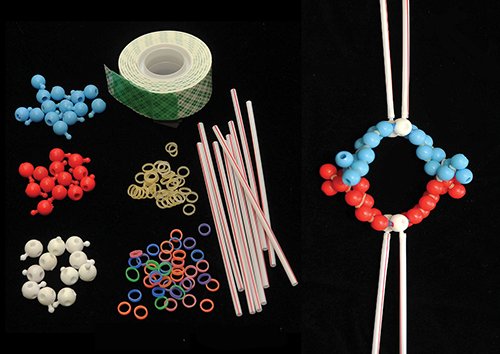
A long-standing tradition uses strings of poppit beads of different colors to model meiosis, especially to show how segments of paired homologous chromosomes are recombined. Our use of orthodontic latex bands to model cohesion of sister chromatids, and plastic coffee stirrers as microtubules, extends what can normally be achieved with ‘standard’ commercial kits of beads, so emphasizing the importance of four key elements of meiosis: (a) the role of chromosome replication before meiosis itself begins; (b) pairing and exchange (chiasma formation) of homologous chromosomes during meiosis I; (c) centromere (kinetochore) attachment and orientation within/on the spindle during meiosis I and meiosis II; and (d) the differential loss of arm and centromere cohesion at onset of anaphase I and anaphase II. These are essential elements of meiosis that students best need to visualize, not just read and think about. Bead modeling leads them in that direction, as our gallery of figures and accompanying text show.
Primary image: Unassembled components of ‘PoppitMeiosis’ – a poppit bead exercise aimed at student learning of meiosis. Beads are snapped together to model bivalent chromosomes (on the right side), with double-stick tape (top) representing the synaptonemal complex, orthodontic latex bands representing cohesion rings, and coffee stirrers representing microtubule bundles that connect centromeres to the spindle poles.

Saurabh Chaporkar onto Meiosis
@
on